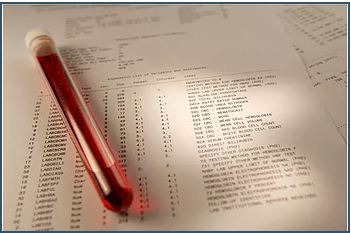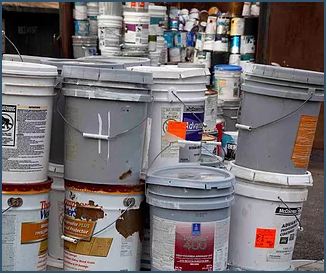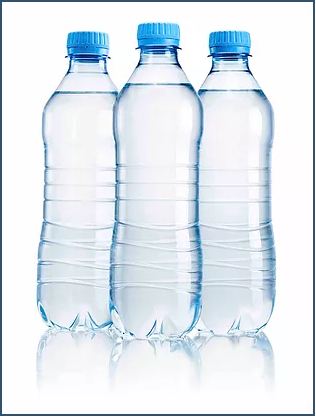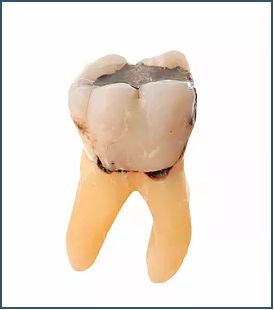Assessment In Environmental Medicine

There is no question that the state of our environment impacts an indvidual’s health. Highly popularized cases of industrial contamination of soil, water and air have put a spotlight on this issue. Unfortunately, most of us are exposed to low levels of contaminants each and every day. At Marsden Centre we take the impact of environment on health and disease seriously. We are often asked: “What patients are candidates for environmental medicine?” Our answer is that every patient case should be reviewed through the lens of environmental medicine. During regular patient care each naturopathic doctor at Marsden Centre will assess the potential role that an individual’s environment (either at work, home or travelling) may play in their current and future health. This is done through a detailed intake and/or through an extensive exposure questionnaire. If an individual is found to have the potential for significant exposure to an environmental contaminant, the naturopathic doctor in Vaughan may refer for further testing to attempt to quantify this exposure or body burden. Examples of the testing completed at Marsden Centre are found below:
Volatile Solvents Assessment
The Volatile Solvents profile determines volatile solvents/volatile organic compounds (VOC) exposure. VOCs are chemicals that vapourize easily at room atmospheric and temperature conditions. VOCs are mostly inhaled from products such as paints, furniture, building materials, cleaning agents, adhesives, and inks. Painters, construction workers, office workers, those who manufacture furniture are exposed to high levels of VOCs.
The compounds measured in this profile include:
Benzene, Ethylbenzene, m,p-Xylene, o-Xylene, Styrene, Toulene, Hexane, 2-methylpentane and 3-methylpentane.
Click here to see a sample report.


Chlorinated Pesticides Assessment
The Chlorinated Pesticides Profile measures the body burden of chlorinated pesticides, such as DDT. These chemicals are toxic and persistent (don’t readily break down). They are relatively insoluble in water, and bioaccumulate in fat. They are still used as a pesticide mainly for mosquito control in developing countries. In 2001, the Stockholm Convention banned the use of many organochlorine pesticides, but because they are persistent, they remain in our agricultural soils and cycle through the food chain through our fruits, vegetables, and drinking water. Those who are farmers or who live(d) near agricultural areas, and/or those with neurological complaints should have this test performed.
The compounds measured in this profile include:
Hexachlorobenzene (HCB), Heptachlor Epoxide, Oxychlordane, trans-Nonachlor, DDE (p,p1), DDT (p,p1), Dieldrin and Mirex.
Click here to see a sample report.
Phthalates and Parabens Assessment
The Phthalates and Parabens Profile helps determine body burdens of these chemicals from everyday exposures. Phthalates are plasticizers, added to plastics to make them more flexible, durable, and transparent. Phthalates are used in enteric coated pharmaceutical/nutraceutical pills, gelling agents, stabilizers, lubricants, binders, and emulsifying agents. These products can be found in personal care products such as hair spray, perfume, eye shadow, and nail polish. Other items containing phthalates include children’s toys, detergents, modelling clay, paints, pharmaceuticals, and food products. Since phthalates are not chemically bonded to the plastics, as the plastics degrade, phthalates are released. Phthalates may be absorbed through the skin or by inhalation, however the main source of phthalates are dietary. Fatty foods such as milk, butter and meats tend to be our higher sources of phthalates. PVC (polyvinyl chloride)/plastic water bottles may also contain phthalates. Many medical tubing and intravenous bags contain DEHP – diethylhexylphthalate. Phthalate exposure has been linked to hormonal changes, birth defects, and obesity through its interference with metabolism.
Parabens are chemicals used in personal care products such as shampoos, lotions, soaps, gels, and toothpaste. They are also used in food additives, and in pharmaceuticals. They are primarily used for their bactericidal and fungicidal properties. Parabens can cause skin irritation, and other dermatoses. Their estrogenic and carcinogenic effects are a concern and require further research.

The compounds measured in this profile include:
mono-ethyl phthalate (MEtP), mono-2-ethylhexyl phthalate (MEHP), mono-(2-ethyl-5-hydroxyhexyl) phthalate (MEHHP), mono-(2-ethyl-5-oxohexyl) phthalate (MEOHP), methylparaben, ethylparaben, propylparaben and butylparaben.
Click here for a sample report.

Toxic Metal Assessment
The toxic metal assessment focuses on analysis through a random and provoked urine test. Conventional testing for toxic metals has two main limitations:
1) The reference ranges used are far below what levels are now known to cause long-term health risks.
2) They cannot adequately assess long-term accumulation since most of these metals are stored in blood and urine as well as organs, connective tissue, nervous system and bone.
While random and provoked urine testing has its limitations it is much more sensitive to detect long-term heavy metal accumulation when compared to conventional approaches.
The metals that are measured in the urine include:
Aluminum, Antimony, Arsenic, Barium, Beryllium, Bismuth, Cadmium, Cesium, Gadolinium, Lead, Mercury, Nickel, Palladium, Platinum, Tellurium, Thallium, Thorium, Tin, Titanium, Tungsten, and Uranium.
**Some of the highly toxic metals include mercury, lead, cadmium, arsenic and aluminum.
Heavy metals exposure can have a neurotoxic effect on the body. Many metals can get deposited in the brain, the kidneys, liver, and bone, where they are stored extremely well. This makes it challenging for the body to remove these metals without additional nutraceutical or botanical support. Identifying body burden of these metals is especially important in those who consume fish and shellfish, have “silver” fillings, and root canals. Those who smoke, or are in construction or plumbing normally have increased levels of metals in their bodies.
Click here for a sample report
PCBs Assessment
The PCBs profile measures the body burden of polychlorinated biphenyls (PCBs). PCBs were used in transformers, capacitors, and coolants. Its production was banned in 1979 by the US Congress and in 2001 by the Stockholm Convention for its persistence in the environment. PCBs have entered the environment through its use as well as its improper disposal. There have been many large scale contaminations of PCBs by electric companies like General Electric and Westinghouse into our landfills and rivers and lakes. PCBs are bioaccumulative and are found to be highest concentration in fish and butter. The most common health effect observed from PCB exposure are skin conditions such as chloracne and rashes.
The compounds measured in this profile include:

2,3′,4,4′,5-Pentachlorobiphenyl
3,3’,4,4’,5-Pentachlorobiphenyl
3,3′,4,4′,5,5′-Hexachlorobiphenyl
Click here for a sample report.
2,2’,3,4,4’,5’-Hexachlorobiphenyl
2,2’,4,4’,5,5’-Hexachlorobiphenyl
2,2’,3,4,4’,5,5’-Heptachlorobiphenyl